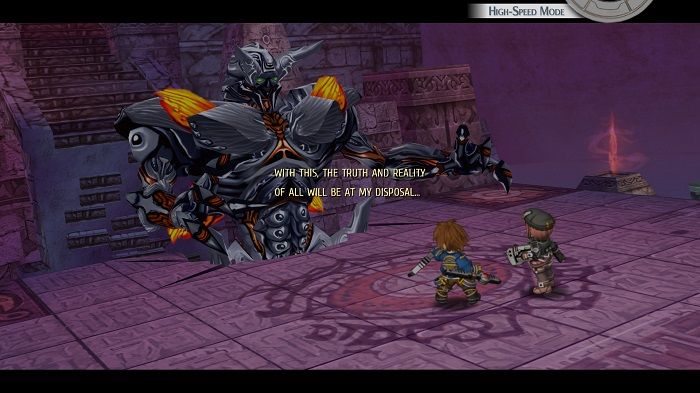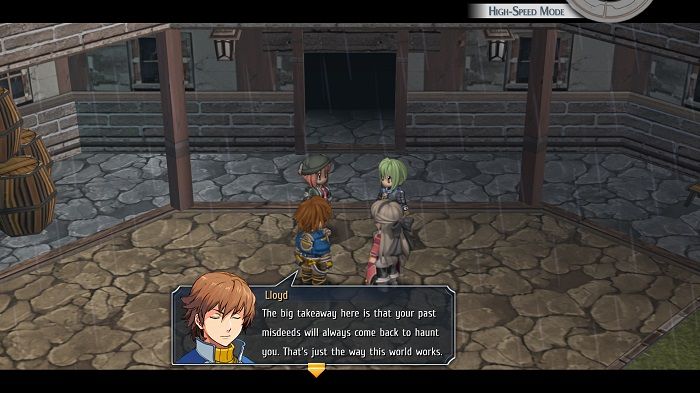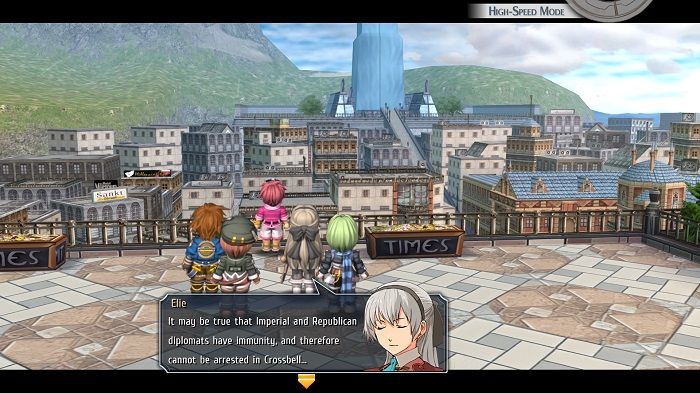The Legend of Heroes: Trails to Azure Review
The Legend of Heroes: Trails to Azure is one of the most specifically brilliant games of the year. In fact, I’d go so far as to say it’s one of the most specifically brilliant games of all time. If you’ve played the previous game in the series, The Legend of Heroes: Trails from Zero, you know what I mean. If you haven’t, I’ll do my best to explain it to you.
Trails to Azure is the 11th game in The Legend of Heroes franchise and the 5th main game in the Trails subseries. It picks up a few months after the ending of Trails from Zero and focuses on the same characters in the same setting. And it’s a direct sequel to the events of that game. In short, while Trails from Zero is a great place to get into the franchise, Trails to Azure is not. Trails to Azure is a great reason to get into the franchise. It’s not for everyone, but you’ll have a great time if it’s for you. This review may contain spoilers for The Legend of Heroes: Trails from Zero.
In the aftermath of Trails from Zero, things are getting complicated for the independent city-state of Crossbell. It’s still stuck between the Empire of Erebonia and the Calvard Republic, both of which claim sovereignty over it. Then a recent political upheaval leads to a shift in government. Strange organizations with ulterior motives are making themselves known. And tensions are growing between the empire of Erebonia and the Calvard Republic, with Crossbell stuck in the middle. Lloyd Bannings and the Special Support Section are once again on the case. And this time, they have some new members… and Crossbell actually believes in them. However, this may not be enough to save their home or the team’s integrity.
Trails to Azure is a Great Sequel
Trails to Azure has a noticeably more somber tone than its predecessor. It focuses on the fallout of a city-wide disaster: trauma, debt, gentrification, and class conflict. Crossbell’s inability to meaningfully punish Erebonian or Calvardian criminals is a recurring issue. As the mayor of Crossbell begins pushing for independence, a tense political situation devolves into far-right terrorism. The first Crossbell game was dedicated to building up the city and the SSS. This sequel threatens to tear both the city and the party apart.

In many ways, this game should be better than Trails from Zero, but the prolonged absence of Randy and Tio hurts. The original SSS team had fantastic chemistry right off the bat. Noel and Wazy can’t quite fill Randy and Tio’s shoes. They’re good characters in their own right, but I would happily trade them to start with Randy and Tio.
The other reason Trails to Azure isn’t a better game than Trails from Zero is simple. It doesn’t actually feel like a separate game. There are sequels and there’s one game being told in two parts, and this feels like the second half of Trails from Zero. I’m not complaining about more Trails from Zero–I loved Trails from Zero. But this does make it hard for me to recommend Trails to Azure to people who haven’t played it.
The Backstory Menu is Not Enough
When a game has a Backstory option in the main menu, you know what you’re in for. As I said, Trails to Azure is clearly a sequel that assumes you played the first Crossbell game. It also offers a bonus to players who upload clear data of Trails from Zero when starting it up. And if you’re interested in this game, you’ll probably like Trails from Zero.

In terms of pacing, Trails to Azure moves both faster and slower than I expected. After Trails from Zero spent ages introducing the cast and setting before letting me do anything, I thought this game would do the same. Instead, Trails to Azure starts in the middle of a mission and barrels forward. There are still breaks for exposition, but it’s more focused on the new mechanics and fresh additions to Crossbell.
But shorter cutscenes don’t mean there’s any less information being presented. There’s still a lot of infodumping going on in shorter chunks. An international trade conference is plot relevant. And it’s still vital that you learn about the state of Crossbell’s financial district before the plot kicks in. Never change, Trails. Never change.

There are four difficulty levels: Easy, Normal, Hard, and Nightmare. Easy is designed for busy people and those playing for the story. Normal is a pretty standard JRPG experience and Hard is a little more intense for JRPG fans. Nightmare, meanwhile, is balanced for New Game Plus. This game uses the same semi-tactical JRPG mechanics as the previous game with some new bells and whistles. More enemy weaknesses, Master Quartz, Combination Crafts, and Burst add more nuance to combat. And you finally get an Orbal Car to drive and customize.
Trails of Even More Fantasy Geopolitics
Going back to Crossbell felt like revisiting an old friend. As I wandered through the familiar streets, catching up with the characters, I realized something. The primary appeal of Trails to Azure—and the larger Trails series—is that it feels like a living, breathing world. The NPCs change their dialog with each major event. A lot of work went into creating Zemuria’s various nations and the problems they face. Countless optional scenes lurk behind every corner. Some of them even require clear data from previous games to unlock. All of this gives these games a very specific tone I’ve never found anywhere else. And they’re long enough and full of enough missable scenes and collectibles that you really need to be in love with that very specific tone to play them.

The graphics aren’t much different from the previous title. This makes sense, as both Trails from Zero and Trails to Azure were originally handheld releases. They were also first published back-to-back in 2010 and 2011. It’s no wonder most of the graphics seem to have been recycled. Still, it’s kinda disappointing that the character models still look like they’re made of playdough. The anime-style character portraits have changed to accommodate new outfits and hairstyles, at least. And the voice acting is stellar but only available in Japanese.
Trails to Azure is a good sequel. It builds on everything the first Crossbell game created. The city and the characters still feel familiar, but the new mechanics add something fresh to a game I know well. And the stakes are higher than ever, which is vital to a narrative-driven game. All in all, I wouldn’t recommend playing this title if you haven’t played Trails from Zero. But if you have, it’s a must-play.
If you love fantasy worldbuilding, sidequests, and worlds you can get lost in, you will love this game. If not, you probably won’t get the appeal. Either way, play Trails from Zero first and then come back. Trails to Azure will be waiting.
***PC code provided by the publisher***
The Good
- A good sequel
- Crossbell still feels alive
- Narrative is still well-crafted
- New characters and mechanics add
- Really long
The Bad
- Requires you to play Trails to Zero
- New characters have less chemistry
- Feels like the second half of one game
- No graphical improvement
- Really long

